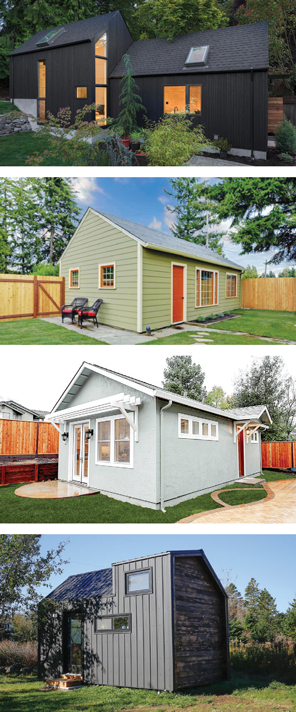It’s no secret that the shortage of housing in Canada is at a critical point. Despite the attention this has garnered in the last few years, the truth is that this problem has been developing for decades. As the population grew, so did the need for more housing. Development projects in cities like Toronto and Vancouver included detached, semi-detached, and townhomes: larger homes on larger lots. Then came the surge of high-rise and high-priced condos and apartments: smaller living spaces in massive buildings with little to no green space. And we simply did not build enough to satisfy the demand for housing.
When the CMHC declared that Canada needs 3.5 million additional homes by 2030 to address the housing shortage, the provinces panicked, especially Ontario, which makes up the bulk of the shortfall — 1.48 million of the 3.5 million. Continuing to build traditional neighbourhoods (detached, semi-detached, and townhomes) in major cities and suburbs needs to continue, but there is an urgent need to consider other more innovative solutions.
THINKING OUTSIDE THE (HOUSING) BOX
Some architects argue we need to address “the missing middle,” a term that describes the lack of smaller living units, such as “plexes” and low-rise developments. These units are smaller in square footage and provide housing solutions for more people while preserving green space.

Provinces and municipalities are also now actively encouraging home owners to develop “additional dwelling units” on their existing lots. Why not set up an “in-law suite” in the basement with a separate entrance, or build a self-contained apartment above the garage, or even use some of the under-utilized space in the backyard for a rental unit? These options can provide opportunities for multi-generational family living, or create additional revenue streams for homeowners struggling to pay their mortgages. Most municipalities now allow up to three rental units on a residential property without the need for zoning approval.
Tiny homes are also gaining popularity across Canada, the U.S., and in many European countries. They solve a housing affordability problem while preventing additional stress on the environment. Proponents of the tiny home movement argue that we do not need the large detached homes that have become the norm in North America, and we can help the environment and be perfectly happy in a much smaller and simpler dwelling.
“The housing market is missing the starter and ender home,” explains Aura Poddar, who is a real estate salesperson with Berkshire Hathaway HomeServices Realty in Oakville and co-owner of Habitat28, an Ontario-based builder specializing in prefabricated tiny homes. “Few small homes are available for new home buyers or retirees, and even condos are no longer affordable for many people in the GTA.” Tiny homes have a small footprint and minimal environmental impact. But how do they fit into the already existing infrastructure?
POCKET NEIGHBOURHOODS
The term “pocket neighbourhood” was developed by architect Ross Chapin and his colleagues thirty years ago in the United States and has recently gained popularity in Canada. A pocket neighbourhood is a group of small homes surrounding a shared green space. These neighbourhoods use less space and resources while re-instilling a sense of community with their garden courtyards and shared meeting spaces. Some municipalities in Canada are developing pocket neighbourhoods of tiny homes in converted trailer parks and on small parcels of land in urban, suburban, and rural areas.
“A 50 x 100 foot lot can fit eight tiny homes with gardens,” Aura explains. “They have a small environmental footprint and can be built in about four months in our facility. People learn to live with less. A smaller space that’s clutter-free is also better for emotional wellbeing.”
Habitat28 tiny homes are fully built and assembled in the factory, equipped with a high-efficiency heat pump (dual heat and air conditioning), and helical piles are used as footings to minimize disturbance to the ground. The only energy resources they use are electricity and water.
REIMAGINING “THE HOME”
A new home buyer or retired couple could buy a tiny home in a pocket neighbourhood for $100,000 to $150,000, a very affordable option by today’s standards. Companies like Habitat28 are working with municipalities to build pocket neighbourhoods as one viable solution to the housing crisis.
Those closing in on retirement and wondering how they’ll be able to help their kids find affordable housing while still retiring can consider adding a “garden suite” tiny home to their backyard.



